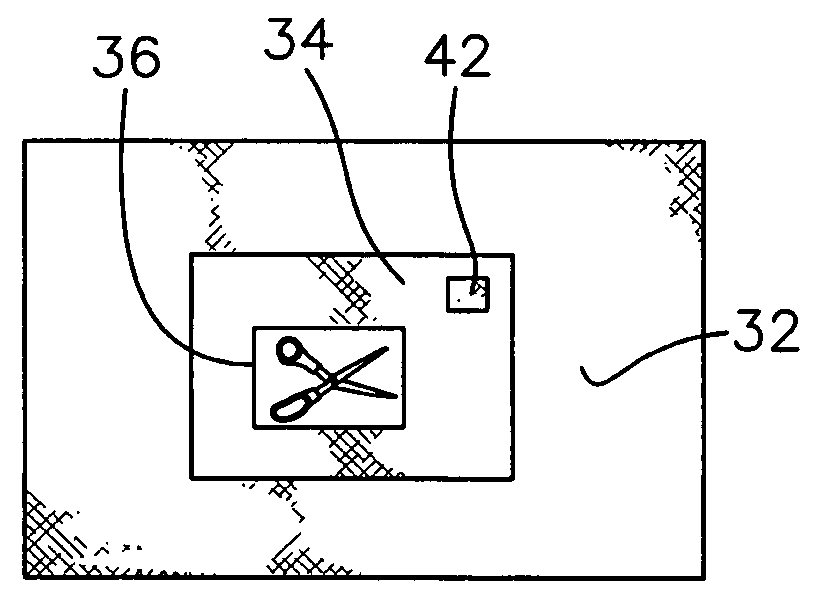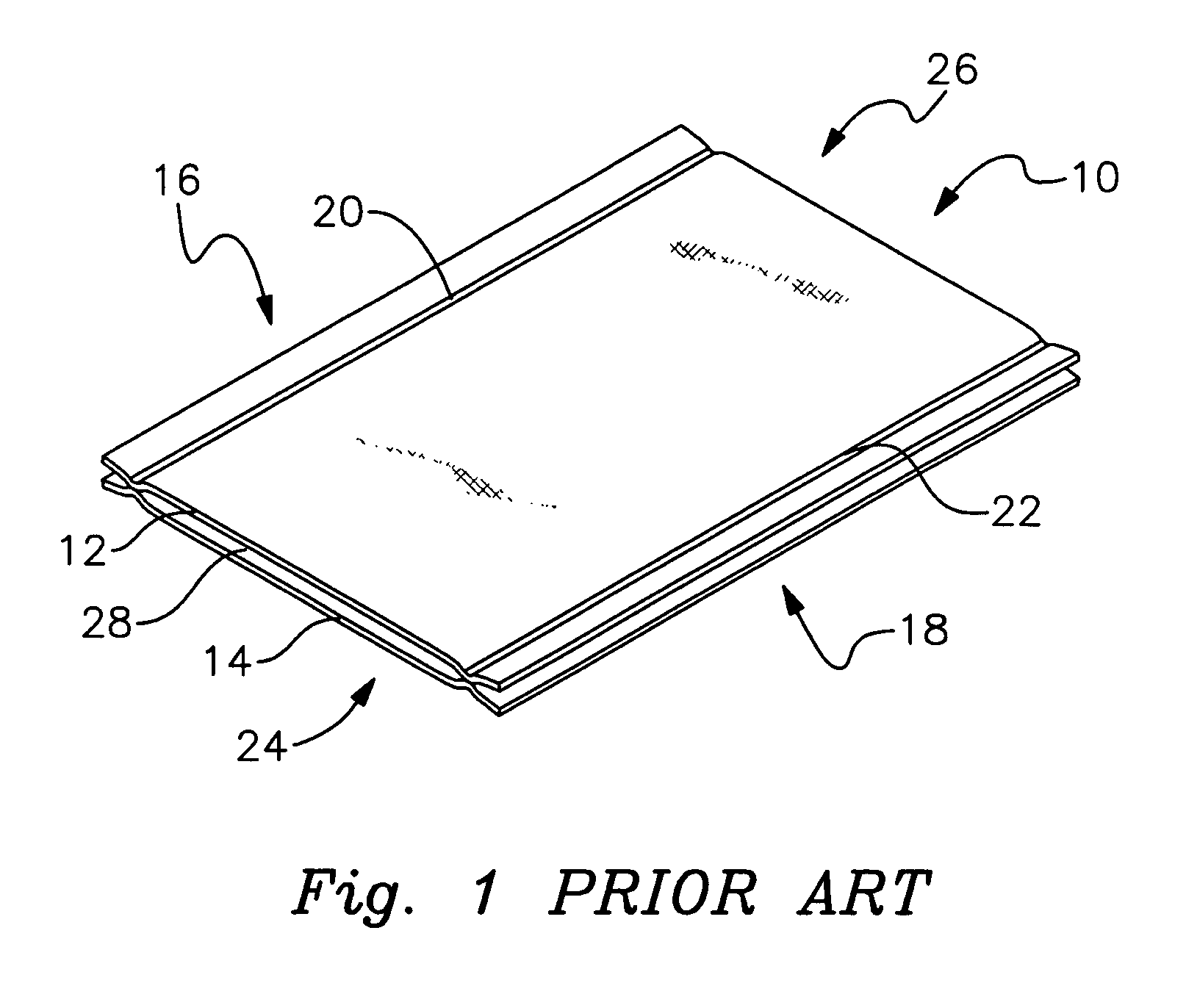Sterilization wraps and methods for sterilizing articles
a technology of sterilization wrap and articles, applied in the field of sterilization wrap, can solve the problems of reducing one's ability to determine whether or not there is a hole through both sheets, and the wrapping of surgical instruments with two separate sheets of sterilization wrap is labor-intensiv
- Summary
- Abstract
- Description
- Claims
- Application Information
AI Technical Summary
Benefits of technology
Problems solved by technology
Method used
Image
Examples
Embodiment Construction
[0035] Referring now more particularly to FIG. 2, there is provided sterilization wrap 30 having a first sheet or layer 32 and a second layer or sheet 34. Preferably, the first layer 32, which is the outside layer, is made of SMS. The first layer 32 is sometimes referred to herein as a sheet of sterilization material. The second layer 34, which is the inside layer, may be made of cellulose or some other absorbent material, which absorbs liquids and aids in drying and which also permits a sterilant, such as steam or ethylene-oxide, to pass therethrough, but inhibits pathogens from passing therethrough. Other absorbent materials could include, but are not limited to, absorbent synthetics such as hydrophillic spunmelt polyolefins, polyester, nylon, as well as polyrayons and bicomponent fibers. The second layer 34 is sometimes referred to herein as a sheet of absorbent material. In order to reduce the cost of the sterilization wrap 30 while not reducing its effectiveness, the second or ...
PUM
| Property | Measurement | Unit |
|---|---|---|
| hydrophilic | aaaaa | aaaaa |
| perimeter | aaaaa | aaaaa |
| heat | aaaaa | aaaaa |
Abstract
Description
Claims
Application Information
 Login to View More
Login to View More - R&D
- Intellectual Property
- Life Sciences
- Materials
- Tech Scout
- Unparalleled Data Quality
- Higher Quality Content
- 60% Fewer Hallucinations
Browse by: Latest US Patents, China's latest patents, Technical Efficacy Thesaurus, Application Domain, Technology Topic, Popular Technical Reports.
© 2025 PatSnap. All rights reserved.Legal|Privacy policy|Modern Slavery Act Transparency Statement|Sitemap|About US| Contact US: help@patsnap.com



